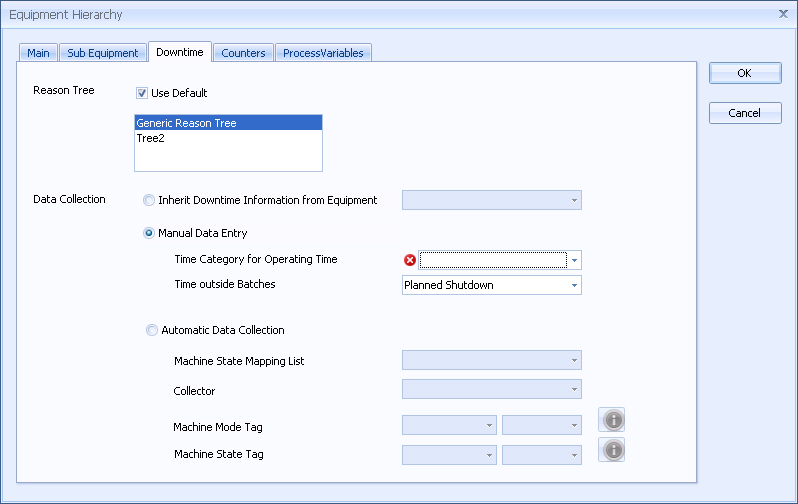
The Downtime tab allows you to select a Reason Tree which specifies which reasons can be selected by the operator for downtime during runtime.
The Downtime tab also allows you to select the data collection method for the equipment.

The Reason Tree specifies which reasons can be selected by the operator for downtime during runtime.
Select a reason tree from the list or enable Use Default to automatically use the default reason tree.
For further information on reason trees, see here.
This section allows you to specify how data for production times and downtimes will be collected. There are three options:
If you select this option the downtime for the equipment will be recorded from another piece of equipment selected in the drop-down list.
This is useful if you have two or more pieces of equipment on a production line and you know that one machine stopping will stop production on the rest of the line.
Select this option if production and downtime will be manually entered using Data Collect.
Select the following information from the drop-down lists:
● Time Category for Operating Time: This time category will be used whenever production is recorded.
● Time Outside Batches: This time category will be used whenever there is no production recorded (i.e. downtime).
For further information on time categories, see here.
Select this option if production and downtime will be stored automatically.
Select the following information from the drop-down lists:
● Machine State Mapping List: Select the mapping list to use. For further information on mapping lists, see here.
● Collector: Select the required Collector service. For further information on Collectors, see here.
● Machine Mode Tag: The Machine Mode value will be read from this location.
● Machine State Tag: The Machine Mode value will be read from this location.
Click the information button ( ) next to the tags
for further information on them.
) next to the tags
for further information on them.